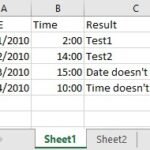Comparing Salesforce profiles can be a complex task. With countless potential permission combinations across objects, fields, page layouts, and more, identifying differences between profiles requires a strategic approach. This article explores the challenges and solutions for comparing Salesforce profiles effectively.
The Complexity of Profile Comparison
A single Salesforce org can house hundreds of custom objects, each with numerous fields and page layouts. When factoring in apps, Apex classes, Visualforce pages, and potential permission sets, the number of configurable permissions can easily exceed 10,000 per profile. This vast number of possibilities makes manual comparison impractical and necessitates the use of specialized tools. Comparing multiple profiles across numerous users with various permission set assignments further amplifies the complexity.
Defining the Comparison Objectives
The key to successful profile comparison lies in defining the specific questions you need answered. Common comparison scenarios include:
- Identifying users with specific permissions: Determining which users have “Modify All Data” access.
- Verifying user access: Confirming if a user has the necessary permissions to access specific tabs or Visualforce pages.
- Comparing user permissions: Identifying the differences in access between two users.
- Comparing profile permissions: Understanding the variations between standard profiles like “Standard User” and “Basic,” or between custom profiles.
- Analyzing permission set differences: Comparing the permissions granted by different permission sets, such as “PTO Manager” and “PTO Administrator.”
Tools and Techniques for Profile Comparison
Several resources and tools can facilitate Salesforce profile comparison. These include:
- Salesforce Setup Audit Trail: Provides a history of profile changes, enabling a point-in-time comparison.
- Salesforce Developer Console: Allows for querying and inspecting profile metadata using SOQL.
- AppExchange Packages: Numerous AppExchange packages offer specialized functionality for profile comparison and management. These tools often provide visual comparisons, reporting capabilities, and automation features. Examples include profile comparison tools and permission set management applications.
Choosing the right tool depends on the specific comparison task and the desired outcome. Factors to consider include the scale of the comparison, the level of detail required, and the need for automation or reporting.
Conclusion
Effectively comparing Salesforce profiles requires a clear understanding of the comparison objectives and the utilization of appropriate tools. By clearly defining the “what” and “why” of the comparison, administrators can leverage available resources to gain valuable insights into user permissions, streamline profile management, and enhance security. Selecting the right tool allows administrators to efficiently address specific comparison needs, from identifying users with excessive permissions to automating permission assignments based on user roles.

